
This Week in Ophthalmology is a video series highlighting some of the top articles featured on the Ophthalmology Times website.

This Week in Ophthalmology is a video series highlighting some of the top articles featured on the Ophthalmology Times website.

According to the company, MCO-010 is an ambient-light activatable Multi-Characteristic Opsin (MCO) optogenetic therapy for vision restoration in advanced retinitis pigmentosa (RP), irrespective of gene mutation.

According to the company, the platform accompanies the launch of Qdata Retinitis Pigmentosa for life sciences and the development of Practice Insights for clinicians.

According to the company, the axitinib injectable suspension achieved all primary and secondary outcomes and maintained stable visual acuity and anatomical control over 9 months.

The effort represents a consortium of researchers from Penn Medicine, Penn Engineering, the University of Michigan Kellogg Eye Center, St. John Eye Hospital in Jerusalem, and Gyeongsang National University College of Medicine in Korea.

According to the company, a $68 million Series D financing is co-led by Arboretum Ventures and Johnson & Johnson Innovation – JJDC Inc. It also has secured $15 million in structured capital from Catalio Capital Management, with $10 million drawn at closing.
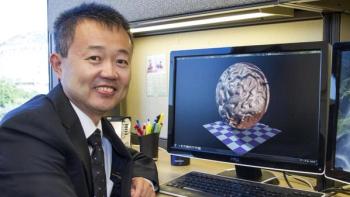
A team of researchers at Arizona State University has developed tools to aid in the diagnosis of myopic maculopathy.

Lotfi Merabet, OD, PhD, MPH, discusses his role as co-chairman of a National Eye Institute initiative focused on advancing research in cerebral visual impairment (CVI). The initiative's key goals include raising awareness about CVI, establishing clear diagnostic criteria, and developing a national registry to track patients and their conditions over time. CVI, a complex condition that affects how the brain processes visual information, requires a multidisciplinary approach involving not only ophthalmologists and optometrists but also neuroscientists, educators, and rehabilitation specialists.
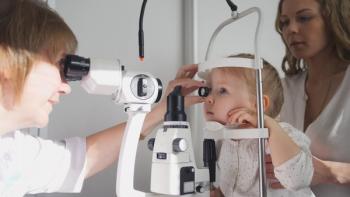
Coordinated by the International Agency for the Prevention of Blindness under the Love Your Eyes campaign banner, World Sight Day 2024 is putting children front and center in this year’s campaign.
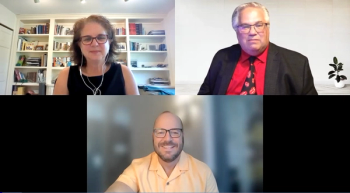
Jeff Todd, president and CEO of Prevent Blindness, and Donna Fishman, Director of the National Center for Children’s Vision and Eye Health at Prevent Blindness, join David Hutton of Ophthalmology Times to discuss the report.

This Week in Ophthalmology is a video series highlighting some of the top articles featured on the Ophthalmology Times website.

In a study, a team of UCLA investigators detail a deep-learning model pre-trained on 2D scans that accurately predicts disease-risk factors from 3D medical-scan modalities.

The donation will support the development of the Artificial Intelligence Innovation Center, a collaborative hub with a focus of preserving the vision of patients with various eye conditions and eliminating blindness.

Marketed as Triesence, it is a preservative free synthetic corticosteroid that is approved by the FDA for visualization during vitrectomy and for the treatment of ocular inflammatory conditions that are unresponsive to topical corticosteroids.

The award from the National Institutes of Health will enable a team of researchers to investigate Alzheimer and Parkinson progression through the eye.

Published data from a pair of Phase 3 clinical trials demonstrated a reversal of pharmacologically-induced mydriasis with a favorable safety profile.
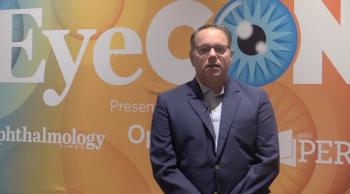
Lloyd Clark, MD, discusses the evolution and current practices in the treatment of common retinal diseases such as age-related macular degeneration, diabetic macular edema, and retinal vein occlusion.

David Chin Yee, MD, sat down with Ophthalmology Times to discuss his presentation on what every Optometrist and Ophthalmologist should know about geographic atrophy at Eyecon 2024.
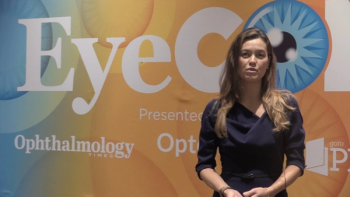
During a presentation at EyeCon 2024, Jennifer Loh, MD, of Loh Ophthalmology Associates in Miami, Florida, discussed advances in anterior segment technology, focusing on dry eye treatments and new surgical technologies for intraocular lenses.

In a study, a team of Chinese researchers looked at the mechanisms behind the development of EI and explored effective treatment options.

This Week in Ophthalmology is a video series highlighting some of the top articles featured on the Ophthalmology Times website.
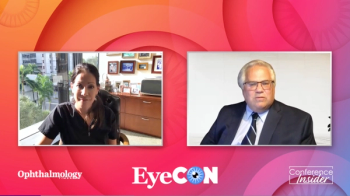
Wendy Lee, MD, sat down with Ophthalmology Times to discuss a symposium she participated in at Eyecon 2024 focusing on Thyroid Eye Disease.

The NIH-supported findings could pave the way for genetic testing, clinical trials, and therapy development for these diseases.

Presented by the National Center for Children’s Vision and Eye Health at Prevent Blindness, the Bonnie Strickland Champion for Children’s Vision Award recognizes efforts by an individual or group of individuals, to improve public health approaches for children’s vision and eye health.

According to the company, the center, which officially opens on Thursday, September 26, will serve as a hub for hands-on training and education in lens-based vision correction.

The option gives Glaukos exclusive global license agreements on pre-agreed terms, including upfront and milestone payments plus royalties.

The study, funded by the National Institutes of Health, supports no change to surgical technique for trichiasis management.

This Week in Ophthalmology is a video series highlighting some of the top articles featured on the Ophthalmology Times website.
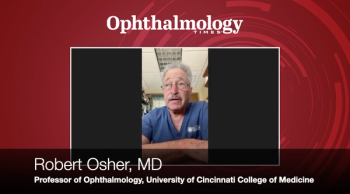
Robert Osher, MD, sat down with David Hutton of Ophthalmology Times to discuss the Lifetime Achievement award he received from the European Society of Cataract and Refractive Surgeons.

Socioeconomic factors have long been a looming issue in various health outcomes. A team of researchers from Shanghai Jiao Tong University School of Medicine and Fudan University set out to review the impact of socioeconomic status inequality on the incidence of AMD.